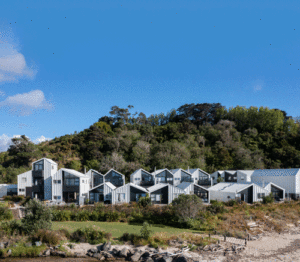Embracing Urban Density: A Sustainable Vision for Future Cities
In the ever-evolving landscape of urban development, the discourse on city planning has shifted towards the essential need for increased density. As an Architect and Urban Designer, I have witnessed the transformative potential of embracing density as a cornerstone of sustainable urbanism. Quality multi-unit development is a viable alternative to the conventional suburban model. Such a shift not only addresses the pressing challenges of climate change and sustainability but also fosters the creation of robust communities, all while maximising the efficient utilisation of existing resources, particularly through our most valuable resource – land.
Central to this discussion is the acknowledgment of the urgent need to combat climate change. Cities, as hubs of human activity, are significant contributors to greenhouse gas emissions. Sprawling suburban developments exacerbate this issue by promoting car-centric lifestyles, increasing reliance on fossil fuels for transportation, and effects due to expansive impervious surfaces. The adoption of density-focused development presents a compelling solution by promoting mixed land uses, reducing per capita energy consumption, and facilitating more sustainable transportation options such as walking, cycling, and public transit.
The densification of urban areas offers a pathway towards achieving greater energy efficiency and resource conservation. By concentrating populations, the demand for utilities and infrastructure per capita is significantly reduced, leading to more efficiency. Additionally, the compact nature of denser urban environments fosters innovation in sustainable building practices, such as green roofs, passive solar design, and renewable energy integration, further mitigating the ecological footprint of human habitation.
The pursuit of urban density is not solely an environmental imperative but also a social one. Traditional suburban developments often foster social isolation and homogeneity, lacking the diverse fabric necessary for vibrant communities to thrive. Conversely, higher-density urban environments promote social interaction, cultural exchange, and a sense of belonging among residents. Shared amenities, communal spaces, and pedestrian-friendly streetscapes foster a sense of community cohesion, vital for mental well-being and social resilience, particularly in an increasingly fragmented society.
The concentration of population and economic activity facilitates access to essential services, educational opportunities, and employment options, thereby fostering socio-economic inclusivity and upward mobility. Quality multi-unit developments provide affordable housing options, catering to diverse backgrounds and household compositions, thus promoting socio-economic diversity within urban neighbourhoods.
In pursuing increased density, it is imperative to leverage existing infrastructure and underutilised spaces effectively. Brownfield re-development, particularly around transit nodes, presents an opportunity to revitalise derelict land while minimising the need for costly expansion of infrastructure. By strategically repurposing vacant or underutilised sites for mixed-use developments, cities can achieve dual objectives of environmental remediation and urban regeneration, catalysing economic growth and enhancing connectivity within the urban fabric.
The transition towards denser urban environments must be approached with careful consideration of community needs and aspirations. Meaningful public engagement and participatory design processes are essential to ensure that densification initiatives reflect the values and preferences of local residents, Iwi, and other interested parties fostering a sense of ownership and stewardship over the built environment. Furthermore, investments in green spaces, public amenities, and cultural infrastructure are essential to mitigate the potential negative impacts of densification.
The imperative for increased urban density is undeniable in the face of pressing global challenges, from climate change to social inequity. By prioritising quality multi-unit developments over the outdated suburban model, cities can chart a course toward a more sustainable, resilient, and inclusive future. Through strategic redevelopment and community-driven design processes, we can unlock the potential of density, creating cities that are not only environmentally sustainable but also socially vibrant and economically prosperous. As stewards of the built environment, we all have a pivotal role to play in shaping the cities of tomorrow, ones that are not just places to inhabit, but communities where people can truly live, work, and thrive.
Ken Crosson is an Architect and Urban Designer and a Director at Crosson Architects, the winner of the 2024 Home Magazine “Home of the Year” award.

